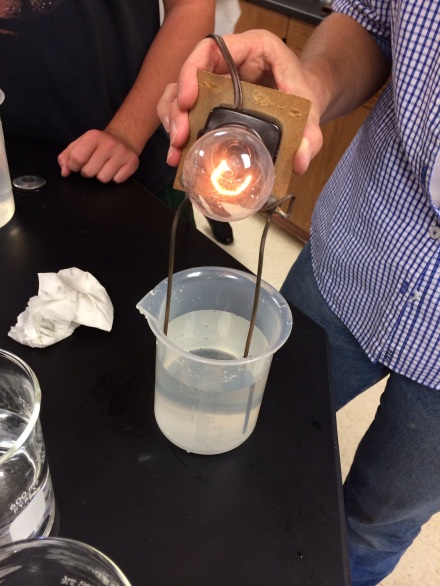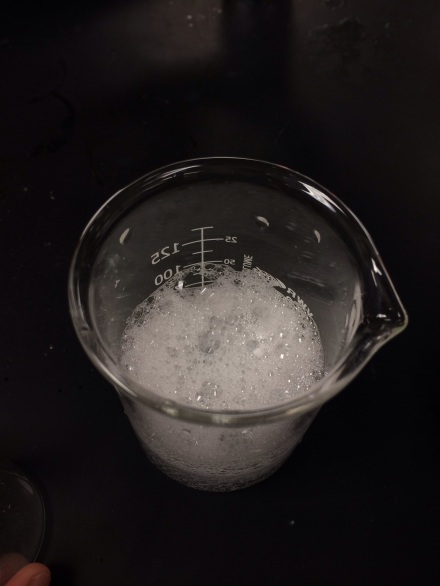Recently we worked with ionized and deionized water. We had to recreate the three different types of the ionized water. One was just distilled water, the other had a low concentration of electrolytes, and the other was comprised of a high concentration. We found out that the increase of salt gave the water a higher concentration, and the addition of distilled water lowered it. The electrolytes are ionic compounds containing both cations and anions that were dissociated in the solvent. The solvent produced negative and positive charges and conducted electricity. A solute is what is dissolved, hence the salt, and the solvent is what does the dissolving. A solution is a homogeneous mixture of two pure substances. An example of a particle diagram would show that the Cl-ions are attracted to the hydrogen atoms and the Na+ atoms are attracted to the oxygen atoms.

There are two different concentrations of salt solutions that can be qualitatively demonstrated in the pictures shown below. By adding less salt to the beaker of water, we were able to cause the light to become dimmer. If we added more salt to the water the light would become brighter. You can mathematically show the difference in concentration by finding the molarity. For example, you can use moles of salt all over the liters of the solution for molarity. You can also use the and also moles of salt over the kilograms of water. To figure out which beaker is the distilled water, low concentration, and high concentration, you use a electricity conducting tool which will show you the amount of electricity that was produced. Obviously the DI water had no ionization within it, so there was no electrolytes. The salt water contained cations and anions, and had a high concentration, because of this the electrolytes and water were attracted to the salt. The tap water is ionized, but due to a low concentration, it didn't produce a lot of electricity.





